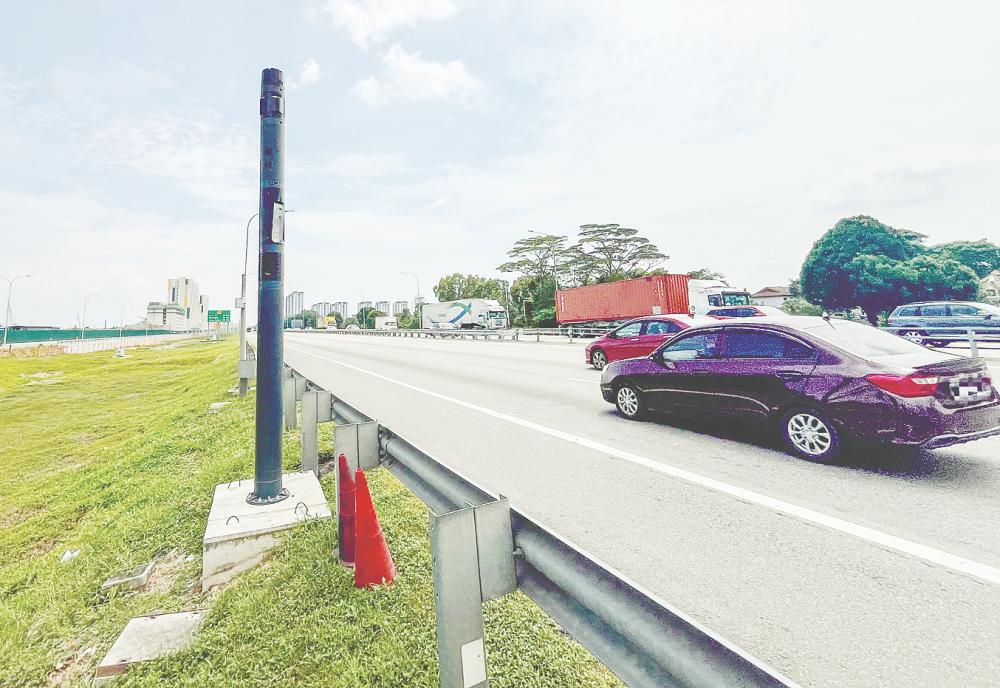PETALING JAYA: With about five weeks before the Hari Raya Aidil Fitri balik kampung rush begins, motorists have been reminded that upgraded Automated Awareness Safety System (Awas) cameras are being rolled out to monitor speedsters and reckless drivers.
Universiti Putra Malaysia Road Safety Research Centre head Assoc Prof Dr Law Teik Hua said motorists should start behaving themselves on the road and make it a good habit, or risk being faced with fines for dangerous driving.
“The upgraded Awas system is a positive initiative aimed at enhancing road safety by ensuring consistent speed enforcement and promoting cautious driving.
“Unlike traditional traffic cameras that capture speed at a single point, the new system measures the time taken to travel between two points.
“It calculates a vehicle’s average speed over a designated distance between two camera locations and if it exceeds the limit, a violation is triggered.
“This approach prevents drivers from slowing down only near cameras before speeding up again.”
Announced by Transport Minister Anthony Loke on Jan 6, the upgraded point-to-point system serves to correct serious loopholes that allowed traffic offenders to evade penalties, ultimately putting other road users at risk.
“The new system’s wider enforcement net would be accompanied by heftier fines, with laws expected to be reviewed and amended this year to deter reckless driving,” he said.
The system is being tested at high risk areas, including the Kuala Lumpur-Karak Expressway in Genting Sempah and the Menora Tunnel in Ipoh, before being rolled out nationwide.
As of Monday, the Road Transport Department has installed 45 Awas cameras nationwide. Perak has the highest number, with 15 operating.
Loke said the system is particularly useful for high risk areas such as highways, where consistent speed control is crucial to preventing crashes.
In November last year, Transport Deputy Minister Datuk Hasbi Habibollah said Malaysia recorded 532,125 road crashes from January to October, with 5,364 fatalities.
Law said the upgraded Awas aims to reduce road crashes by discouraging dangerous behaviours.
However, he stressed that its effectiveness depends on clear signage and higher public awareness.
“Countries such as the UK, Australia and New Zealand have successfully implemented point-to-point enforcement.
“The systems have been shown to reduce speeding and crashes in monitored zones due to proper implementation.
“Malaysia can learn from them by implementing clear signages that alert drivers about enforcement zones and ensure transparent communication on how violations are handled.”
Despite its benefits, he acknowledged that the system could still present challenges due to the technical complexity of monitoring and processing data from multiple cameras, especially across long distances.
Law said weather conditions such as heavy rain or fog could also affect the system’s accuracy, while some motorists may perceive it as an invasion of privacy or enforcement overreach.
“Another concern is fairness and transparency in enforcement, especially in cases of errors or disputes.
“To ensure everything is above board, the government should establish clear and consistent dispute handling processes, such as a dedicated support line for motorists.
“There should also be regular audits of the system to ensure it functions accurately. Transparency in how violations are detected and evidence is gathered would help build public trust.”
He advised motorists to consistently follow the speed limits as the point-to-point system is designed to encourage good driving habits, so the best way to avoid penalties is to drive safely and within the speed limit.
Law said over time, the system would lead to more careful driving, which would reduce road crashes and save lives.
The upgraded Awas calculates a vehicle’s average speed over a designated distance between two camera locations and if it exceeds the limit, a violation is triggered. – Amirul Syafiq/THESUN









